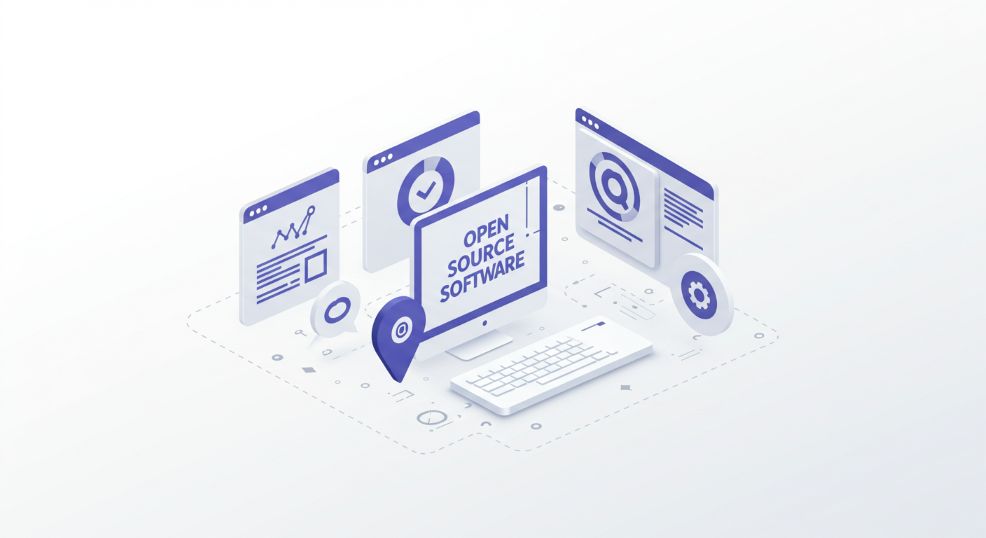Location

I. Introduction
Imagine a world where anyone can access, modify, and distribute software without restrictions. That’s the essence of open source software (OSS). Open source software has revolutionized technology, enabling collaboration and innovation like never before. From its humble beginnings to becoming the backbone of major industries, OSS continues to shape our digital landscape.
II. Characteristics of Open Source Software
A. Open Code Accessibility At its core, OSS allows users to view, edit, and distribute its source code freely. This transparency fosters trust and innovation. B. Community-Driven Development OSS thrives on collaboration. Developers worldwide contribute to projects, ensuring rapid improvements and diverse perspectives. C. Licensing and Legal Framework Open source licenses, such as GNU GPL and MIT, outline how software can be used, modified, and shared, protecting both creators and users.
III. Advantages of Open Source Software
A. Cost-Effectiveness Why pay hefty licensing fees when you can access powerful tools for free? OSS offers significant savings for businesses and individuals. B. Customizability and Flexibility OSS allows users to tailor software to their unique needs, making it a favorite among developers. C. Transparency and Security With open access to code, users can identify and fix vulnerabilities, making OSS often more secure than proprietary alternatives.
IV. Disadvantages of Open Source Software
A. Learning Curve for New Users The flexibility of OSS can be daunting for beginners unfamiliar with technical configurations. B. Limited Support Options Unlike proprietary software with dedicated support teams, OSS relies on community forums, which may not always provide timely assistance. C. Potential for Fragmentation Multiple versions of the same OSS can lead to compatibility challenges.
V. Popular Examples of Open Source Software
A. Operating Systems Linux and Ubuntu dominate the OSS landscape, powering everything from servers to smartphones. B. Web Browsers Mozilla Firefox offers a secure and customizable browsing experience. C. Content Management Systems WordPress empowers millions of websites with its flexible and user-friendly platform. D. Development Tools Tools like Git and Node.js are indispensable for modern developers.
VI. Open Source in Different Industries
A. Technology Sector From cloud computing to AI, OSS drives technological advancements. B. Healthcare Electronic health records and telemedicine platforms often rely on OSS. C. Education OSS provides affordable tools for e-learning, fostering knowledge sharing. D. Government Governments worldwide adopt OSS for cost-effective, transparent solutions.
VII. The Role of Open Source in Innovation
A. Accelerating Research and Development OSS reduces barriers to entry, enabling faster experimentation and breakthroughs. B. Enabling Collaboration Across Borders Developers from different countries work together seamlessly, creating global solutions. C. Inspiring New Business Models From freemium models to service-based offerings, OSS has redefined entrepreneurship.
VIII. Challenges in Adopting Open Source Software
A. Compatibility Issues Integrating OSS with existing proprietary systems can be complex. B. Resistance to Change Organizations may hesitate to switch from familiar proprietary tools. C. Managing Contributions and Updates Balancing community contributions and maintaining quality control is a challenge.
IX. Open Source and Cybersecurity
A. Strengths in Transparency OSS enables public scrutiny, making it easier to identify and fix flaws. B. Addressing Vulnerabilities Regular updates and patches ensure robust security. C. Community-Driven Security Patches Collaborative efforts lead to faster resolutions of security concerns.
X. The Economic Impact of Open Source
A. Cost Savings for Businesses OSS reduces operational costs, especially for startups. B. Impact on Startups Affordable and scalable, OSS is a game-changer for new ventures. C. Job Creation and Market Opportunities OSS fosters a thriving ecosystem of developers and service providers.
XI. Ethical Implications of Open Source Software
A. Promoting Digital Equality OSS bridges the gap between resource-rich and resource-constrained regions. B. Encouraging Ethical Software Development Open code discourages unethical practices and promotes accountability. C. Addressing Intellectual Property Concerns Clear licensing ensures respect for creators’ rights while encouraging innovation.
XII. The Future of Open Source Software
A. Trends in Open Source Adoption OSS adoption is accelerating, with more organizations embracing its benefits. B. Emerging Technologies and Open Source AI, blockchain, and IoT increasingly rely on OSS for innovation. C. Predictions for the Next Decade Expect OSS to play a pivotal role in shaping smart cities, personalized healthcare, and more.
XIII. How to Contribute to Open Source Projects
A. Identifying Suitable Projects Start with projects that align with your skills and interests. B. Understanding Contribution Guidelines Each project has its own rules—be sure to read them before contributing. C. Benefits of Contributing Contributing to OSS enhances skills, builds networks, and gives back to the community.
XIV. Comparing Open Source and Proprietary Software
A. Key Differences Open source offers flexibility; proprietary provides dedicated support. B. Use Cases for Each OSS suits innovation-driven projects, while proprietary tools excel in standardized solutions. C. Hybrid Models Many organizations adopt a mix of both for optimal results.
XV. Conclusion
Open source software is more than just a trend—it’s a transformative force driving innovation, collaboration, and accessibility. By embracing OSS, we not only unlock new opportunities but also contribute to a more inclusive and equitable digital future.
FAQs
- What is open source software? Open source software is software with source code freely available for modification and distribution.
- How does OSS benefit businesses? OSS reduces costs, enhances flexibility, and fosters innovation, making it ideal for businesses of all sizes.
- What are the common challenges of OSS? Challenges include compatibility issues, a steep learning curve, and limited dedicated support.
- Is OSS secure? Yes, its transparency allows vulnerabilities to be identified and addressed quickly.
- Can I use OSS for commercial purposes? Most OSS licenses allow commercial use, but always check the specific license terms.
- How can I contribute to OSS? Identify projects, follow contribution guidelines, and collaborate with the community.
- Which industries rely on OSS? Healthcare, education, government, and tech are major adopters of OSS.
- How does OSS impact cybersecurity? OSS enhances security through transparency and community-driven updates.
- What is the future of OSS? Expect OSS to drive advancements in AI, IoT, and blockchain technologies.
- Why choose OSS over proprietary software? Choose OSS for cost savings, flexibility, and innovation, especially for custom projects.




